- The percentage of 3rd through 8th grade students scoring Mastery and above on ELA and math LEAP tests combined improved statewide.
- In New Orleans, LEAP scores did not improve; the percentage of students scoring Mastery and above has stalled, while the percentage of students scoring Basic and above has dipped.
- The increased rigor of state content standards has contributed to New Orleans’ LEAP performance stagnation, as schools and students work to adjust. This coming school year, 84% of New Orleans’ public schools will have adopted standards-aligned, high-quality curriculum.
- As schools implement this, we will see change. Our crisis of teacher retention also contributes to the stagnant or dipped scores. To keep our great teachers, we must provide the high-quality professional development they need to implement new standards and also pay them the higher salaries they deserve.
The Louisiana Department of Education has released the results of the LEAP state standardized assessments for K-8 and high schools during the 2018-19 school year. In New Orleans, LEAP performance did not improve compared to the previous school year. Citywide average performance across all public schools stayed roughly the same as last year, or dipped. This follows a pattern of the past few years; as Louisiana’s tests have gained the rigor our students deserve, scores have dipped or stalled as teachers and students alike adjust.
The percentage of 3rd through 8th grade students scoring Mastery and above in ELA and math combined grew in Louisiana statewide. In New Orleans, the percentage of 3rd through 8th graders scoring Mastery and above in those subjects combined stayed mostly the same as last year, but a smaller proportion of students scored Basic and above.

Our state’s new, stronger standards require new, stronger curriculum. Last school year, for the first time, the majority of New Orleans schools adopted the high-quality, standards-aligned “Tier 1” curriculum they need for students to meet these new standards. As they fully implement these materials in the years to come, we expect to see scores rise.
At New Schools for New Orleans, we launched the Instructional Quality Initiative (IQI) in 2018 to facilitate this process. This coming school year, 84% of New Orleans’ open-enrollment public schools will be using Tier 1 materials, with IQI’s support. This is quadruple the percentage of open-enrollment schools that used Tier 1 materials in the 2017-18 school year.
What matters now is putting that rigor into place. The majority of New Orleans public schools purchased the curriculum and instructional materials last summer, and this year, they will implement it further, using targeted professional development to help them adjust.
Tier 1 Curriculum Drives Improvement At Turnaround Schools
Notably, some schools that put a special focus on curriculum last year have already seen results. Two K-8 turnaround schools that InspireNOLA Charter Schools began operating in the past few years saw gains in their LEAP performance in 2018-19. The percentage of students at Dwight D. Eisenhower Charter scoring Mastery and above in ELA and math combined increased by nine percentage points, and the percentage of students at McDonogh 42 Elementary Charter grew by seven percentage points.
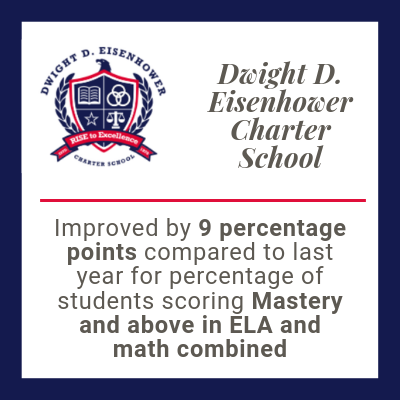
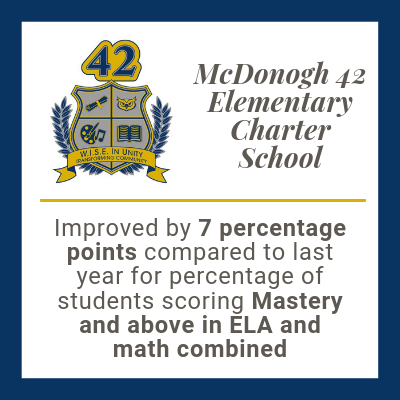
InspireNOLA CEO Jamar McKneely credited this improvement to many factors, including using Tier 1 curriculum:
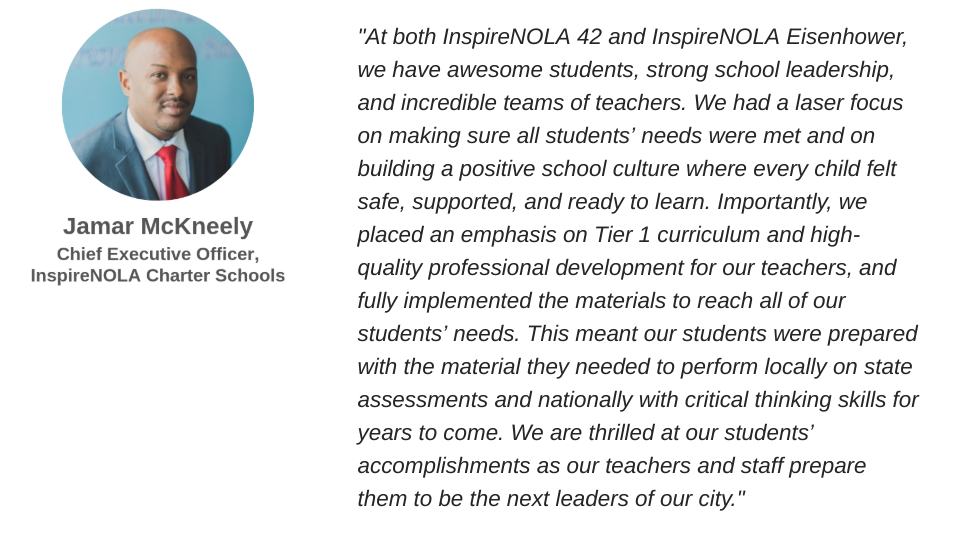
We Must Provide Our Teachers with Professional Development and Higher Pay
As we address curriculum implementation citywide, we must also address teacher retention. These critical challenges are closely connected. At the start of last school year, New Orleans public schools had lost 30% of their teachers from the year before. Every teacher that leaves takes their expertise with them. Adjusting to this new curriculum takes time, so we cannot expect improved results if teachers leave year after year.
Our teachers know this, too. Last year, NSNO surveyed over one thousand of our city’s educators — some who were still teaching, and some who had just left the classroom. One of the main reasons they said they would leave a role was because of this very issue: they wanted more professional development to help them adjust to the new curriculum. They also said they needed higher pay. As a city, we owe them both.
In a statement released yesterday, Superintendent Henderson Lewis declared a need to focus on these issues.
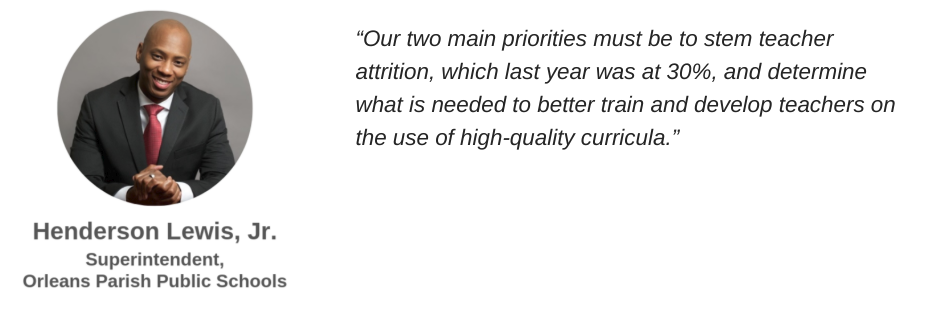
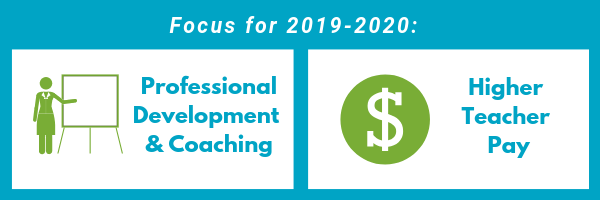
NSNO Is Taking Action
Toward this end, NSNO is meeting with each school leader in the city to discuss a retention blueprint to help them provide the resources their teachers need in order to stay, including professional development.
And already this summer, NSNO’s Instructional Quality Initiative has sponsored New Orleans educators’ participation in professional development sessions or conferences on the new curriculum. As we begin the year ahead, they will continue that professional learning and fully implement the shifts in the classroom.
As we do so, we must also come up with a citywide plan to increase teachers’ pay. Neighboring Jefferson Parish, for instance, has already voted to do just that. Through a millage passed this spring, they are raising their pay to become the second highest in Southeastern Louisiana. On a state level, our legislators can expand upon recent efforts to increase teacher pay; Louisiana’s average teacher salary is around $10,000 below the national average. The Louisiana House passed a spending plan this spring that would raise the salaries of public elementary and high school teachers by $1,000. This is critical, but must be just the beginning of the conversation.
By focusing on increased pay, professional development, and curriculum implementation, we will see more teachers stay in the classroom, successfully educating students. As they do so, we expect to see scores rise and students thrive. If we want students to learn more each year and meet these new standards, we need to give our educators the support they deserve. Our students and teachers need us; the time is now. We must not shift our strategies due to any short-term academic stagnation, acute teacher shortages and the lack of necessary financial supports. We must and will continue to move forward, together.
Celebrating Success Across New Orleans
Congratulations to the following nine elementary and middle schools that performed better than the state average! A higher percentage of each school’s 3rd through 8th grade students scored Mastery and above on ELA and math LEAP tests combined, compared to the statewide average of 39%.
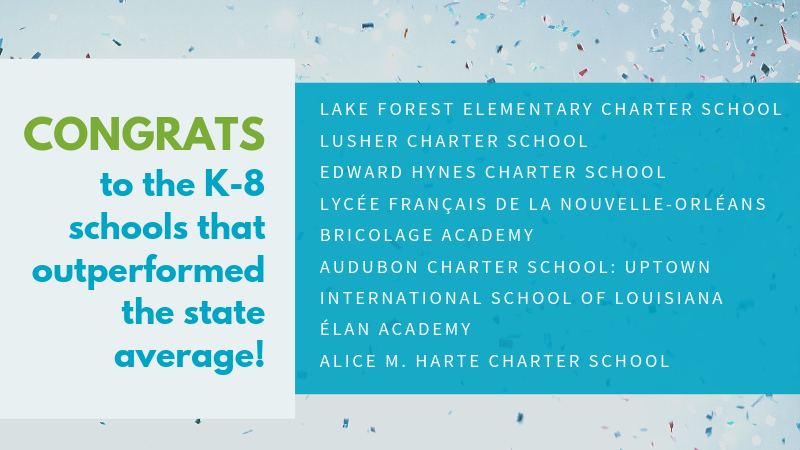
Individual School Performance, Grades 3-8: LEAP Percentage Mastery and Above
The following table shows school-level performance on 3rd through 8th grade LEAP assessments over the past two years. Percentages represent students scoring Mastery and above on ELA and math tests combined.
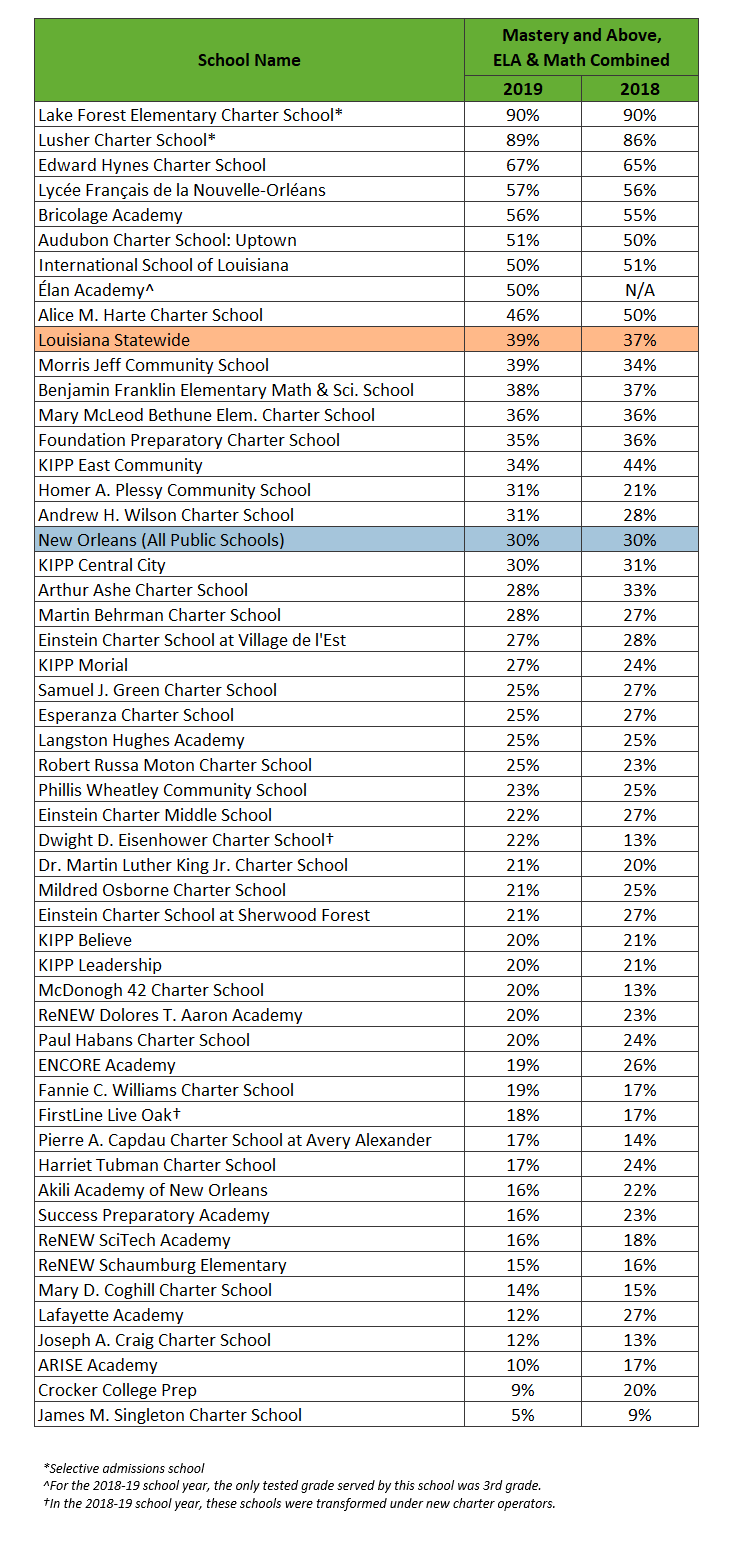
Individual School Performance, High School: LEAP Percentage Mastery and Above
The following table shows school-level performance on high school LEAP assessments over the past two years. Percentages represent students scoring Mastery and above on ELA and math tests combined.
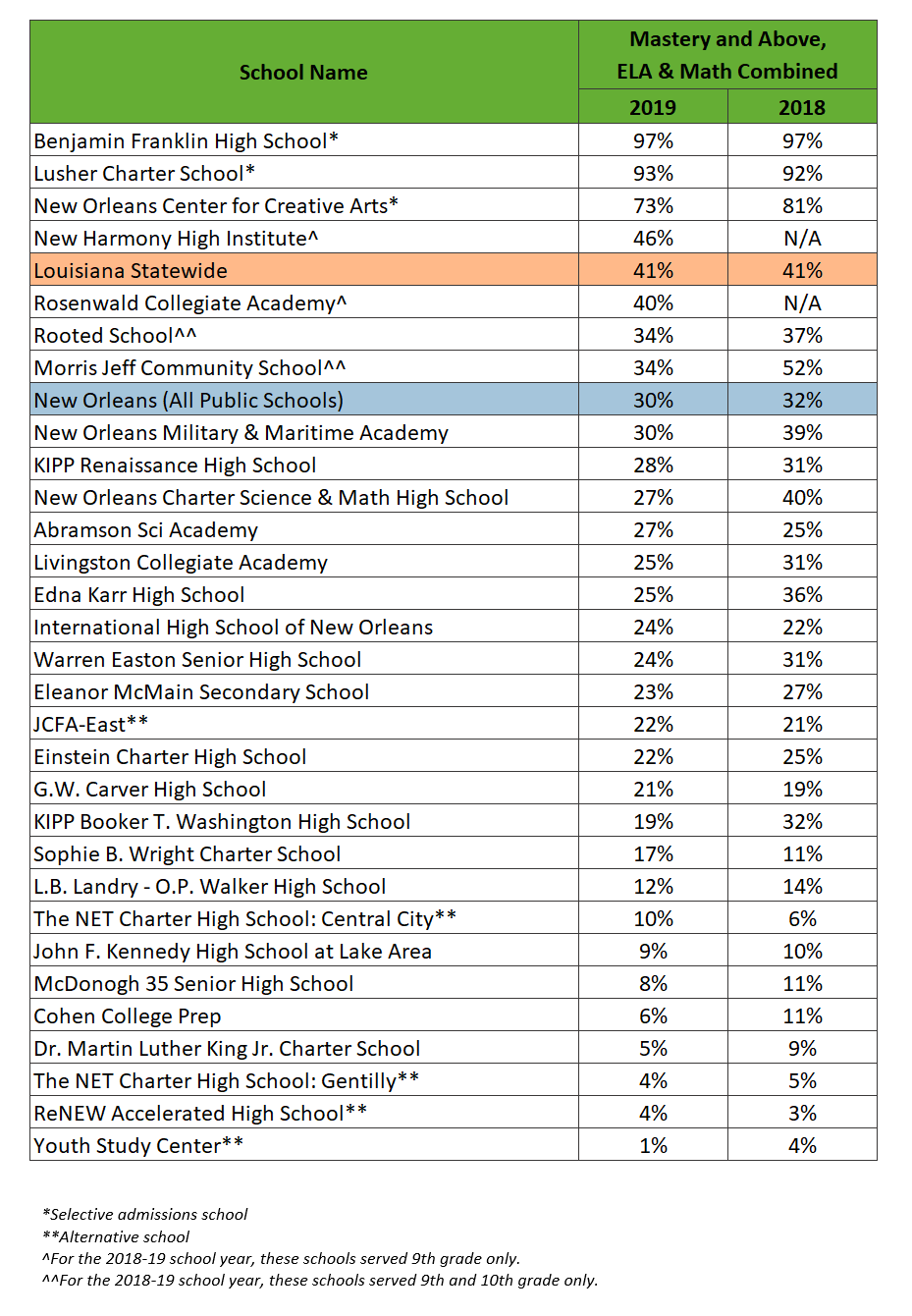
For more information, please refer to the Louisiana Department of Education’s press release as well as the following downloadable data files:
